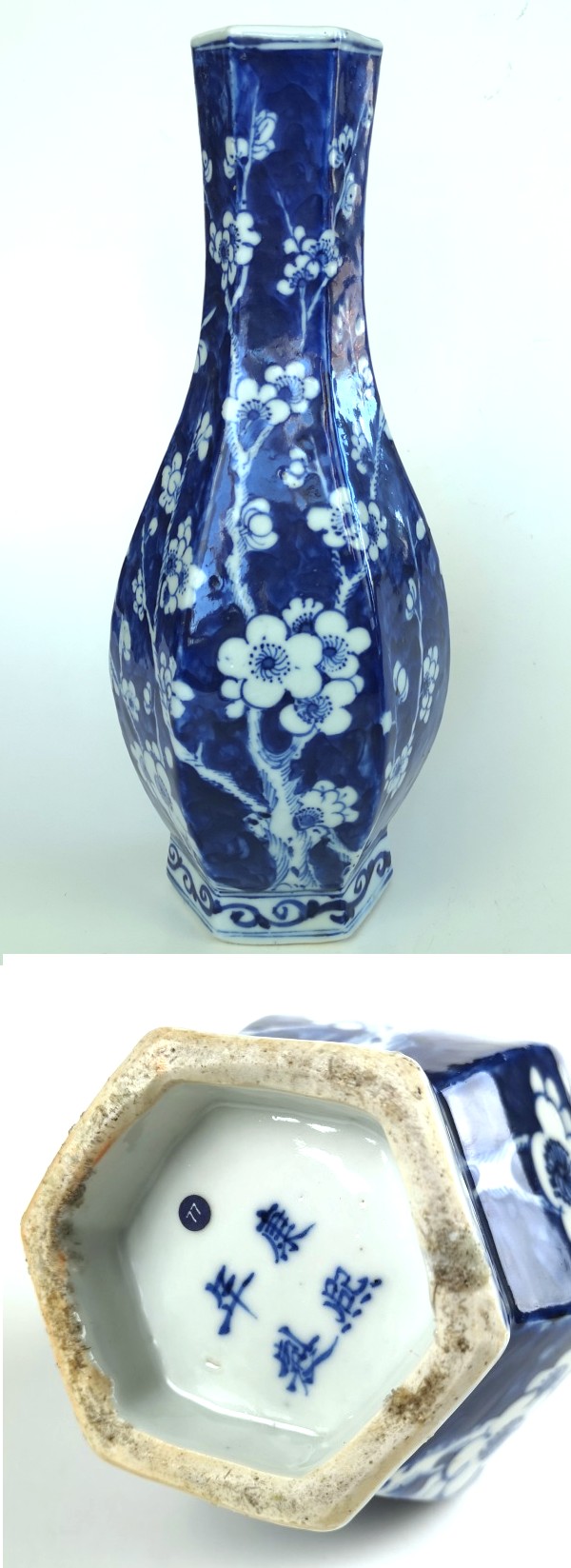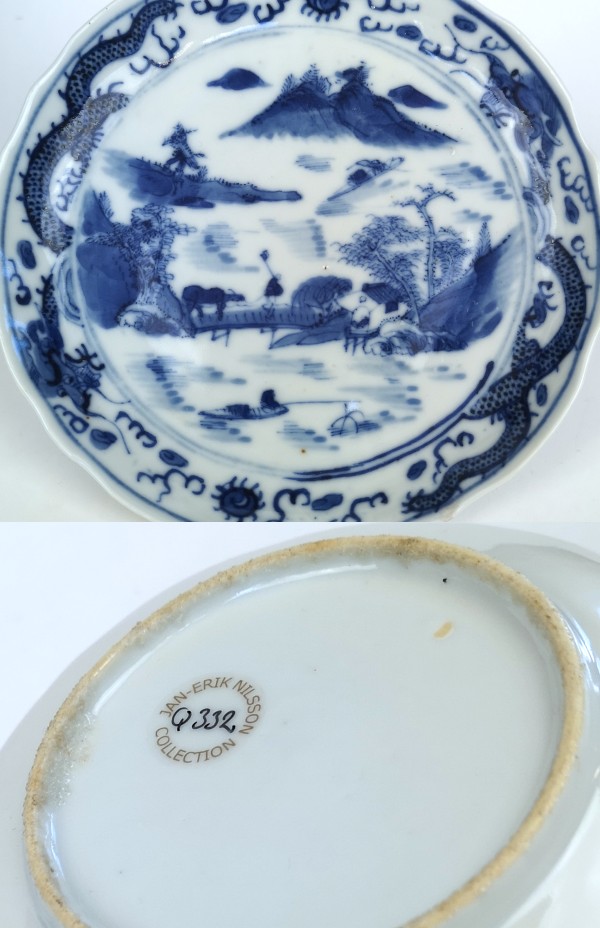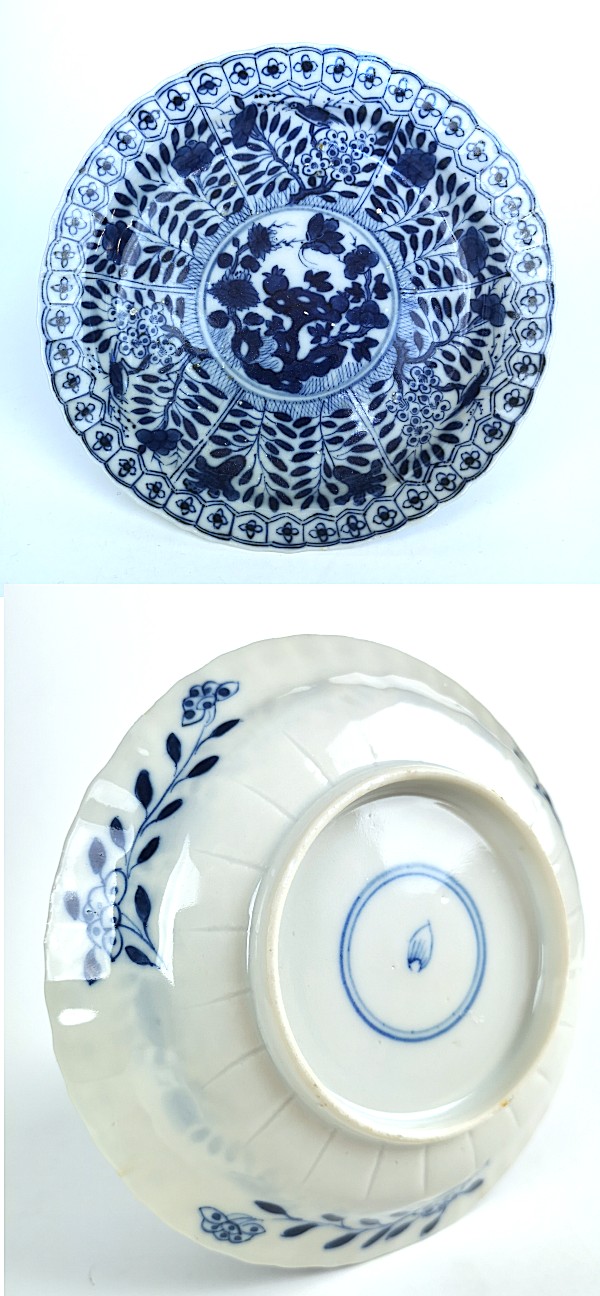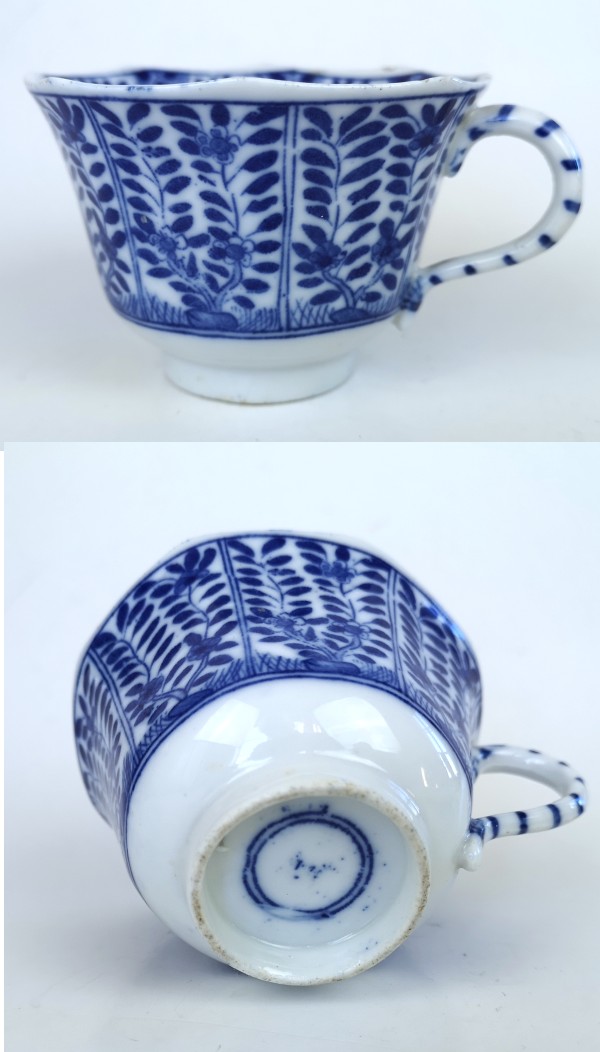
Vase with a vivid underglaze blue and white Hawthorn, or Plum blossom decoration, in Kangxi style. What makes this vase as Kangxi revival piece is the shape that did not occur during the Kangxi period, the four character mark with no circles, and the border near the gritty footrim. Genuine Kangxi period four character marks are very rare and are almost only seen on very small pieces with a narrow base.
Photo: JE Nilsson Collection © 2022

This dish is probably late 19th century. The central panel decoration goes back to the interest the Kangxi emperor showed in the manual occupations of the people. We can see farmer and fishermen. The dragon on the rim is out of character with the center theme. The grit on the foot rim is a clear giveaway for the Guangxu period revival pieces.
Photo: JE Nilsson Collection © 2022

One of the most commonly occurring revival pieces are dishes with radiating cuts suggesting molding, where the molding does not show on the front side, which is completely flat. The base have a mark that is imitating a Kangxi auspicious symbol but drawn in such a way that we can't tell what it is supposed to be. The cell border near the rim is wrong. Should not be that kind of border at all. The very white paste is a sign of early 20th century.
Photo: JE Nilsson Collection © 2022

Cup with handle. The shape is not correct. The decoration on the handle is new, maybe imitating bamboo. Handles on Kangxi cups are so rare they are almost non existent. Most Kangxi period cups don't have handles. The blurred printed mark on the base is a obvious giveaway for a late date.
Photo: JE Nilsson Collection © 2022
The term "Kangxi revival" was invented here (at the Gotheborg Discussion Board) by our former moderator Mike Vermeer to facilitate discussions of late Qing dynasty porcelain that are in the style of Kangxi period (1662-1722) porcelain - and often marked as such - while not exactly copying Kangxi pieces.
The term is as far as I know so far not academically recognized, probably because it takes decades of practical experience to recognize what is, and is not, a period piece of any kind, which might make it difficult to study.
Mikes partner was a high end Los Angeles antiques dealer, Alan Griggs. When Alan passed, Mike Vermeer inherited a stunningly difficult collection of monochromes and Imperial pieces which he continued to extend, in particular Lang yao and Tea dust. Not all were correct but at that level, life is not as easy as it seems. Mike was very knowledgeable and did a massive amount of research before posting anything on the Discussion Board, that often amounted to lectures. He hung around here as resident guru on things difficult until his passing in 2015.
His point was that the Empress Dowager Cixi (1835-1908) had been fascinated by the Kangxi period (1662-1722) which encouraged the porcelain industry to start making blue and white porcelain not copying, but made in the spirit of, Kangxi. Maybe that was not the only reason, since correlation and causality are different things.
An alternative explanation of the revival of the Kangxi style, could be the popularity of Chinese porcelain in Victorian interiors and its appearance for example in department stores such as Liberty in London and AA Vantine in San Francisco and New-York.
The porcelains are blue and white pieces with a generally busy decoration, typically marked with a blue and white four characters Kangxi Nian Zhi mark, that until then was called "Kangxi fakes", wasn't really fakes but new pieces just made in a style similar to Kangxi. There were new shapes, new borders and new motifs that just looked like they could have been from the Kangxi period, but were in fact new creations.
So, since there were no point in calling anything a "fake" that wasn't we started to call that kind of pieces "Kangxi revival" once we started to recognize them as a group or maybe, phenomena. I don't think the concept is taking off anytime soon in the trade, but it works here and saves time.
Chinese Kangxi revival pieces can on the whole be dated to the Guangxu period (1875-1908) but, we can find examples made for South East Asia also in Japanese porcelain until the 1950s, when the decorations starts to be reproduced in a somewhat cold and watery style.
I have included a few examples here to help with the explanations.
A